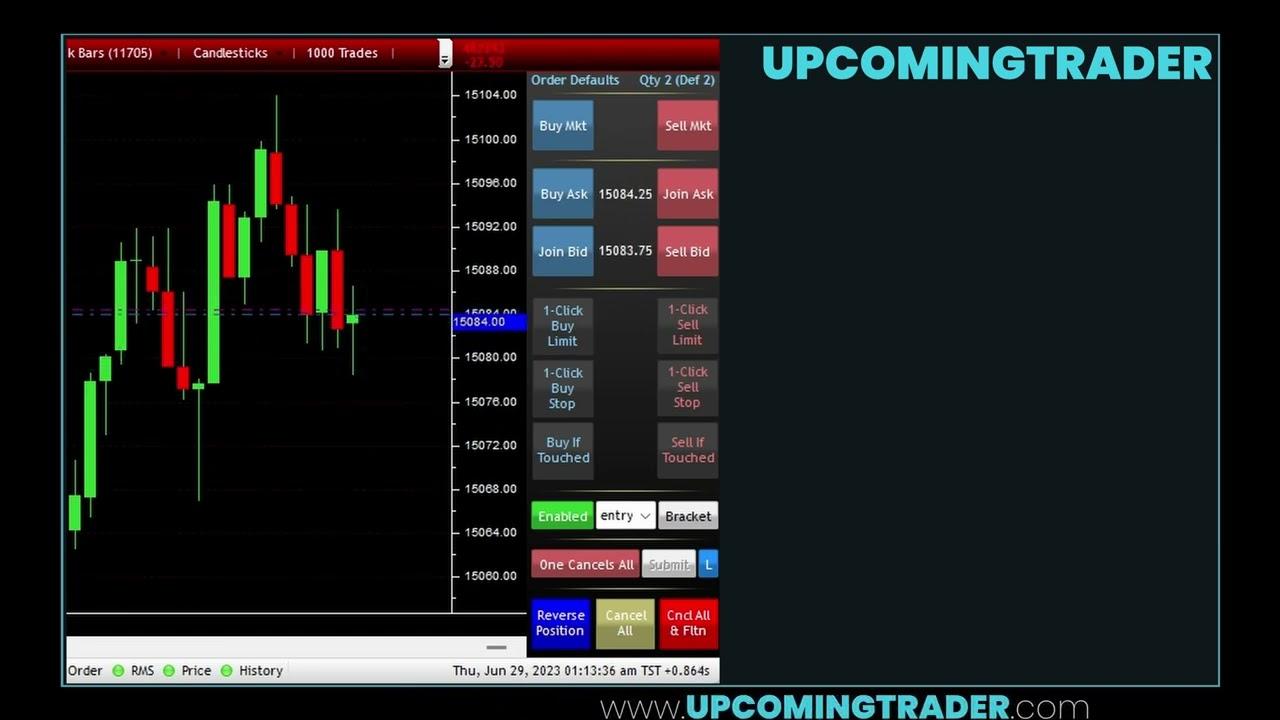Futures Trading in E-Mini NASDAQ: Advanced Day Trading with Price Action Strategies


E-Mini NASDAQ and the Intricacies of Iceberg Orders
The E-Mini NASDAQ market witnesses a plethora of trading activities, and among them is the use of ‘Iceberg Orders’. These large orders, broken down into smaller visible lots, are a testament to the sophisticated strategies employed by institutional traders in the NASDAQ futures market. Recognizing such orders can be a game-changer, offering insights into potential price shifts.
The Mirage of Iceberg Orders for Day Traders
While iceberg orders can provide valuable insights into the intentions of institutional traders, day traders should exercise caution. Trying to spot and interpret these hidden orders in real-time can be a daunting task, especially given the rapid pace of day trading. Instead of getting caught up in the chase, day traders should focus on more tangible aspects of price action trading in the E-Mini NASDAQ. The key is to not get sidetracked by the allure of uncovering hidden orders but to stick to proven day trading strategies.
Swing Trading Strategy: The Broader Implications of Iceberg Orders
For swing traders, iceberg orders can offer a different kind of advantage. While the immediate impact of these orders might be more relevant to day traders, the longer-term implications can be significant for those holding positions over several days or weeks. A series of iceberg orders in the E-Mini NASDAQ might indicate sustained interest from institutional players, hinting at a broader trend. Recognizing and understanding the implications of these orders can be a valuable tool in a swing trader’s arsenal, helping to refine their price action trading strategy.
In the intricate dance of the E-Mini NASDAQ futures market, understanding the role and potential impact of iceberg orders can provide traders with a more informed perspective. However, it’s essential to approach them with the right strategy in mind, whether you’re day trading or swing trading.
Swing Trading Strategy: Distinguishing Spoofing from Iceberg Orders
Swing trading, a strategy that aims to capture gains over a few days to weeks, requires a deep understanding of market mechanics. In the E-Mini NASDAQ futures market, it’s crucial to differentiate between legitimate strategies like iceberg orders and illegal tactics like spoofing. While both might seem similar, understanding the difference can significantly impact a swing trader’s success.
Price Action Trading in the E-Mini NASDAQ: Navigating Volume Pitfalls
Volume is a critical indicator in price action trading, especially when trading futures like the E-Mini NASDAQ. However, it’s easy to misinterpret volume signals. For traders, it’s essential to correlate volume with other indicators and not make decisions based solely on it, ensuring a more holistic trading approach.
Volume Spikes and False Breakouts
One common pitfall in the E-Mini NASDAQ market is mistaking sudden volume spikes as definitive signs of a trend. While a surge in volume can indicate strong interest in a particular direction, it doesn’t always guarantee a sustained move. Sometimes, these volume spikes can lead to false breakouts, where the price moves out of a range temporarily only to revert back. Day traders, in particular, need to be wary of these scenarios, ensuring they combine volume analysis with other price action trading techniques to confirm signals.
The Role of Volume in Swing Trading Strategy
For swing traders, volume plays a slightly different role. While day traders might look at volume on shorter timeframes, swing traders often analyze volume patterns over days or weeks. Consistently high volume during an uptrend in the E-Mini NASDAQ can be a positive sign, indicating sustained interest. Conversely, decreasing volume during a downtrend might suggest a potential reversal. By understanding these volume nuances, swing traders can refine their price action trading strategies, ensuring they’re in sync with the broader market momentum.
In the world of E-Mini NASDAQ trading, volume is undeniably a powerful tool.
However, like all tools, its effectiveness hinges on its correct application. By being aware of common volume-related pitfalls and understanding how to interpret volume in conjunction with other indicators, traders can navigate the futures market with greater confidence.
Refining Your Swing Trading Strategy with Price Action Techniques
Swing trading in the E-Mini NASDAQ market demands continuous learning and strategy refinement. Price action techniques, which focus on raw price movements and patterns, offer traders a set of tools to enhance their swing trading strategies. By backtesting, learning from past trades, and staying updated with the E-Mini NASDAQ market nuances, traders can optimize their strategies for better outcomes.
E-Mini NASDAQ Day and Swing Trading: Harnessing Price Action for Optimal Results
Both day trading and swing trading in the E-Mini NASDAQ futures market present unique challenges and opportunities. By harnessing sophisticated price action trading strategies and continuously refining their approach, traders can navigate the market’s intricacies, aiming for consistent success.
Deep Dive into Swing Trading the E-Mini NASDAQ
Swing trading, particularly in the E-Mini NASDAQ futures market, requires a blend of patience, strategy, and keen market insight. Unlike day trading, where positions are typically closed within the same trading day, swing trading involves holding positions over several days or even weeks. This approach seeks to capitalize on short to medium-term price movements, leveraging the power of price action to identify potential entry and exit points.
For those new to this trading style or looking to enhance their existing knowledge, the YouTube playlist “What Is Swing Trading - Day Trading Nasdaq Futures” offers a comprehensive overview.
By delving into this resource, traders can gain a deeper understanding of swing trading nuances, particularly in the context of the E-Mini NASDAQ.
Excited by What You've Read?
There's more where that came from! Sign up now to receive personalized financial insights tailored to your interests.
Stay ahead of the curve - effortlessly.

